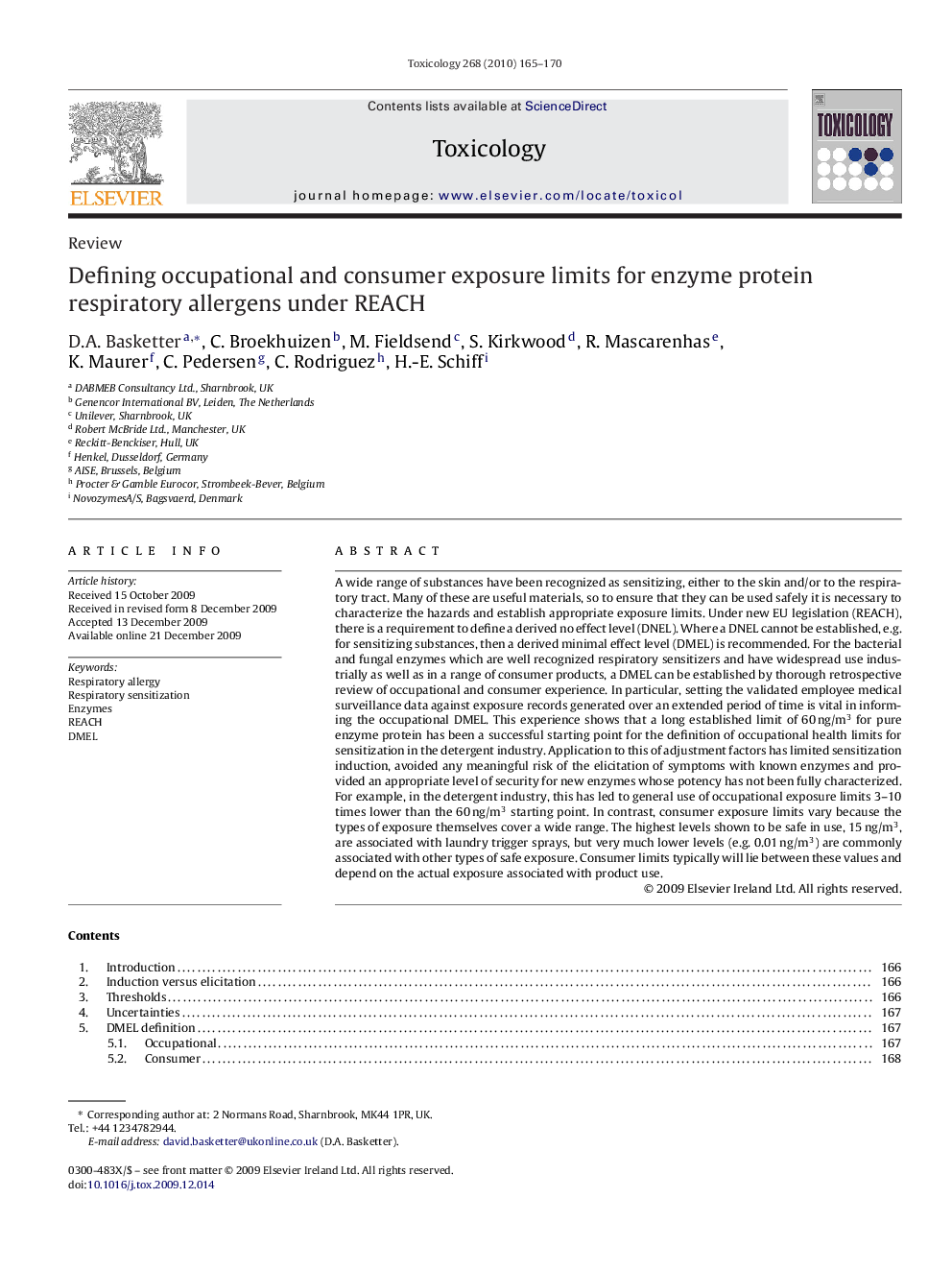| کد مقاله | کد نشریه | سال انتشار | مقاله انگلیسی | نسخه تمام متن |
|---|---|---|---|---|
| 2596429 | 1132529 | 2010 | 6 صفحه PDF | دانلود رایگان |

A wide range of substances have been recognized as sensitizing, either to the skin and/or to the respiratory tract. Many of these are useful materials, so to ensure that they can be used safely it is necessary to characterize the hazards and establish appropriate exposure limits. Under new EU legislation (REACH), there is a requirement to define a derived no effect level (DNEL). Where a DNEL cannot be established, e.g. for sensitizing substances, then a derived minimal effect level (DMEL) is recommended. For the bacterial and fungal enzymes which are well recognized respiratory sensitizers and have widespread use industrially as well as in a range of consumer products, a DMEL can be established by thorough retrospective review of occupational and consumer experience. In particular, setting the validated employee medical surveillance data against exposure records generated over an extended period of time is vital in informing the occupational DMEL. This experience shows that a long established limit of 60 ng/m3 for pure enzyme protein has been a successful starting point for the definition of occupational health limits for sensitization in the detergent industry. Application to this of adjustment factors has limited sensitization induction, avoided any meaningful risk of the elicitation of symptoms with known enzymes and provided an appropriate level of security for new enzymes whose potency has not been fully characterized. For example, in the detergent industry, this has led to general use of occupational exposure limits 3–10 times lower than the 60 ng/m3 starting point. In contrast, consumer exposure limits vary because the types of exposure themselves cover a wide range. The highest levels shown to be safe in use, 15 ng/m3, are associated with laundry trigger sprays, but very much lower levels (e.g. 0.01 ng/m3) are commonly associated with other types of safe exposure. Consumer limits typically will lie between these values and depend on the actual exposure associated with product use.
Journal: Toxicology - Volume 268, Issue 3, 9 February 2010, Pages 165–170